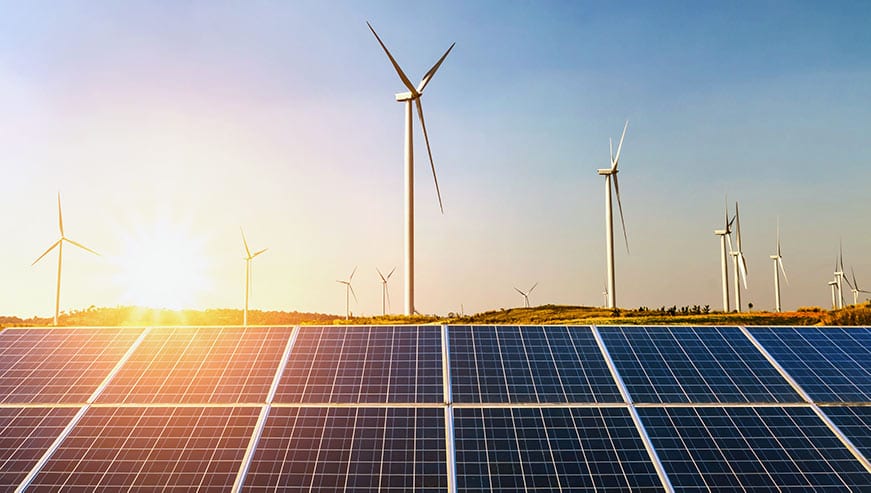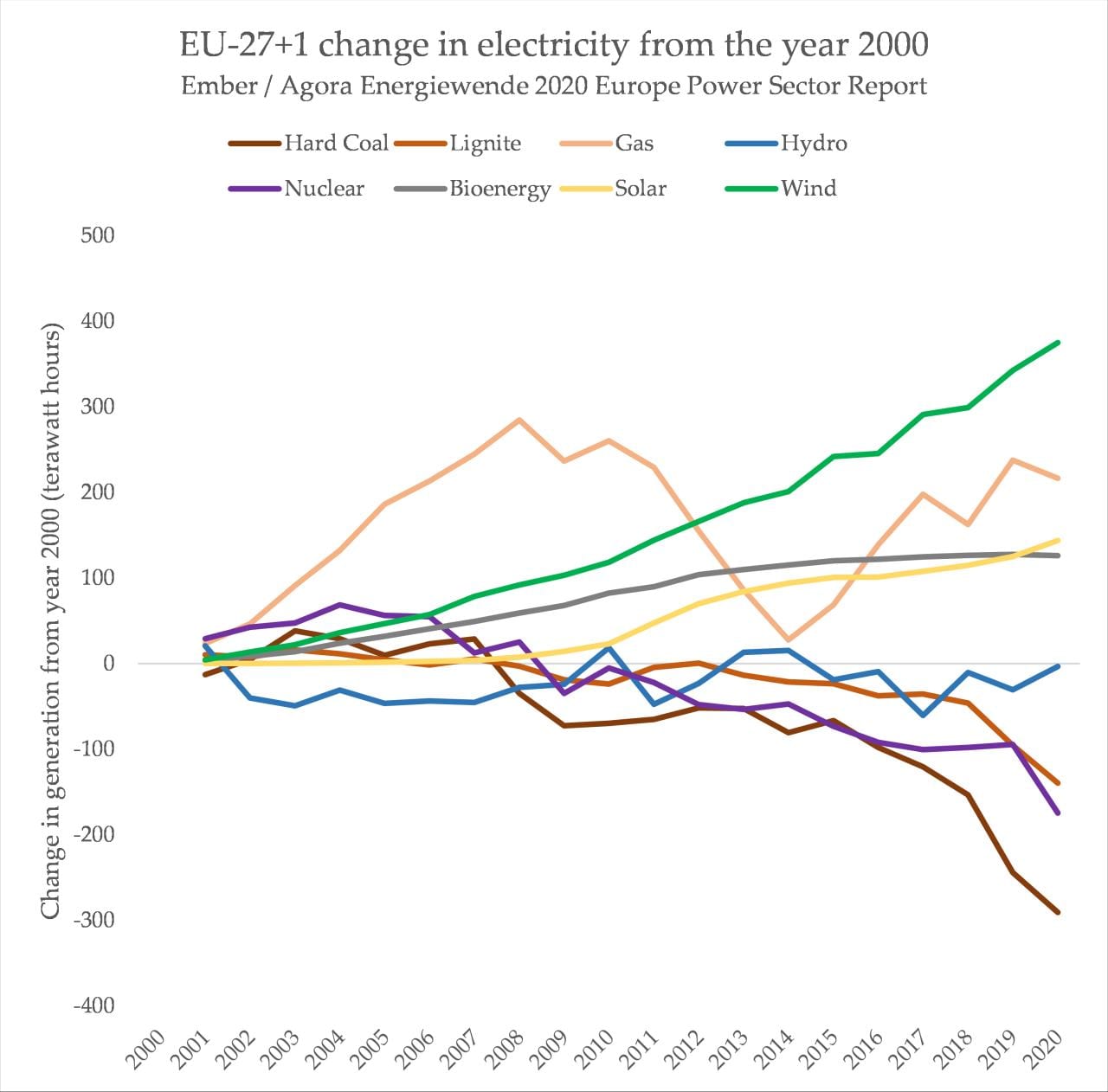Wind and solar lead charge as renewables overtake fossil fuels in Europe

A clear picture of 2020 is emerging, in the context of climate and energy – it has far exceeded expectations for the growth of zero carbon energy and the decline in fossil fuels. A new report from European energy analytics firms Ember Climate and AgoraEnegiewende confirm that, for Europe, renewable energy has risen to 38% of the region’s total electricity (compares to 34.6% in 2019).
Of this 38%, 20% was wind and solar, 13% was hydro and 6% was bioenergy. These forms of zero carbon energy generated more than fossil fuels for all of Europe for the first time in 2020, and that same milestone was hit for Germany, Spain and the UK for the first time too.
“While Covid-19 had an impact in all countries, its impact on the overall trend from fossil fuels to renewables was quite limited,” wrote Ember. “The rise in renewables was reassuringly robust despite the pandemic, and the fall in fossil-fired electricity could have been even more dramatic, had it not been for such a bounce-back in electricity demand and the worst year on record for nuclear generation”.
Wind and solar are easily the dominant reasons for the rise of zero carbon power in Europe. “Wind generation rose 9% in 2020 and solar generation rose 15%. Together they generated a fifth of Europe’s electricity in 2020. Since 2015, wind and solar have supplied all of Europe’s growth in renewables, as bioenergy growth has stalled, and hydro generation remains unchanged”, said Ember. Bioenergy saw a period of growth in the 2000s, but has since stalled, with every year in the 2020s seeing decelerating growth culminating in 2020 being the first year in which bioenergy saw a reduction in generation (of 1.3 TWh) in Europe.
While much of the growth has been unprecedented, wind and solar must together nearly triple their current levels of output to acheive the European Union’s 55% emissions reductions targets by the year 2030. While 51 TWh of wind and solar were added in 2020, “annual additions will need to nearly triple to around 100 TWh/year to reach Europe’s 2030 target of 55% cuts to GHG emissions,” write Ember. “That means well over 100 TWh added in 2030 itself, as growth picks up through the decade. Currently national energy and climate plans add up to only about 72 TWh/year, according to Ember’s ‘Vision or Division?’ report, so countries still need to step up their 2030 national commitments”. There is a sizeable ambition gap that must be filled.
Nuclear power continues to experience a variety of struggles within Europe, with France and Germany both seeing the largest absolute falls in nuclear output. Though Germany often receives much attention for its intentional nuclear phase-out policy, France’s reductions in nuclear generation have been significantly larger, despite no such policy. The fall in European nuclear power generation between 2019 and 2020 was the largest since at least 1990, and even larger in magnitude than the close of Germany’s plants post-Fukushima. A large proportion of the drops in generation were caused by plant failures.
The report paints a picture of a range of complicated challenges that must be resolved in the short term to ensure that the growth of wind and solar is not only sustained, but accelerated. The EU is taking a more bullish role in global climate issues too, with an announcement yesterday declaring that the world must commence a global phase-out of coal in energy production, and vowing to use its economic power to accelerate the transition away from fossil fuels through targeted divestments.
“EU energy diplomacy will discourage all further investments into fossil fuel based energy infrastructure projects in third countries, unless they are fully consistent with an ambitious, clearly defined pathway towards climate neutrality,” the joint commission will say, reports Bloomberg.
It is still early in the year, and already there is a rapid influx of new announcements, milestones, records and major economic shifts around the world placing Australia in an ever-more exposed position on climate action.
Source: https://reneweconomy.com.au/wind-and-solar-lead-charge-as-renewables-overtake-fossil-fuels-in-europe/














0 nhận xét:
Đăng nhận xét